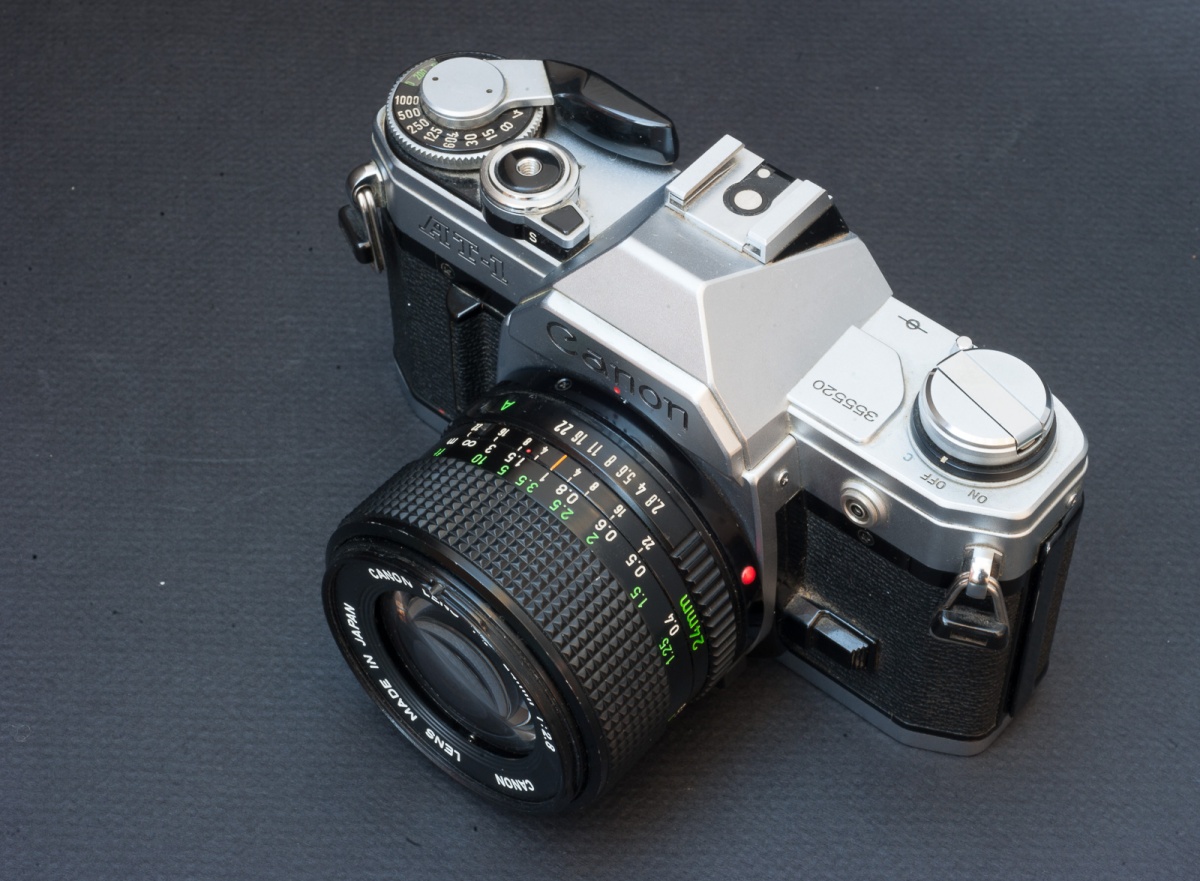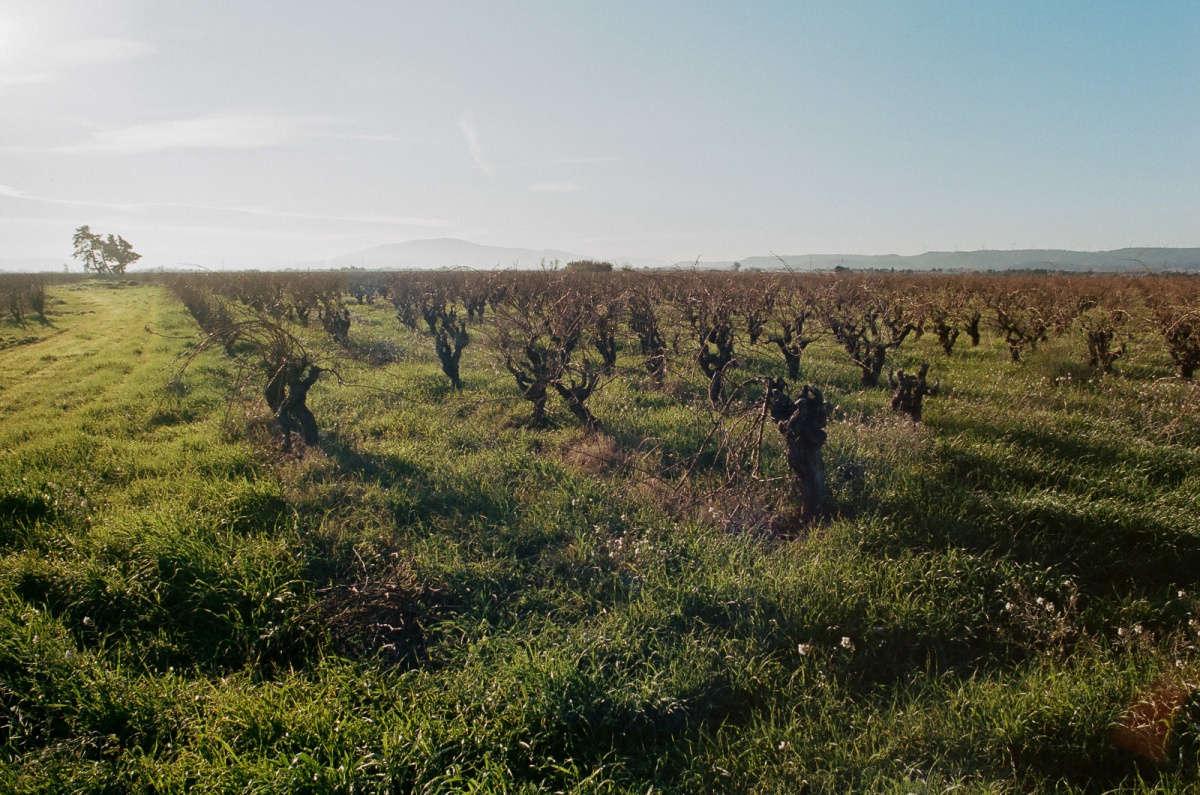Not totally happy with the pictures you get from a smartphone? Do you want more reach, do you want to capture fast moving action, or on the other hand, are you looking for more control over the depth of field, over the exposure? Do you want the images to be really yours, instead of leaving software developers in Cupertino or Mountain View decide for you how the pictures you’re taking should look like? You need a “real camera” and you have to learn how to use it.

Obviously, nowadays, your first “learner” camera will be digital – digital accelerates the learning process – you can see immediately the result of changes in the settings, you can re-take the shot until the results corresponds to the scene you’ve seen with the eyes in your mind: remember, your eyes capture the information, but the processing is done in your brain.
But at some point, you may get tired of modern digital cameras as well. While not as automated as a smartphone, they still decide a lot of things behind the scenes (they set the focus, the exposure, they enhance the dynamic of the image, they sharpen) and it’s not always easy (or even possible) to take control back from them. Maybe you’re ready for something more demanding, but also more gratifying: film photography.
There are so many ways to shoot with film. If you don’t have the time (or the space) to deal with film processing, you can buy color film and have it processed and scanned by a lab – not exactly cheap (at least $0.50 per picture) but not too difficult.

If you want the ultimate silver halide experience, you can set you own dark room, and process film yourself (Black and White, let’s keep it simple). The difficulty will be to scan it – unless you go completely analog, buy an enlarger and make your own prints like they used to do in the old days.
But in any case, you’ll need one (or a few) cameras.
Almost nobody makes new film cameras anymore. So your camera will be an “old” one, bought on eBay, at Shopgoodwill, or from the stores specializing in analog cameras.
If you ask Google about learners film cameras, most of the articles they reference will suggest a manual focus camera from the mid seventies to early eighties – like the Canon AE-1, the Minolta X-700, the Nikon FM, or the Pentax K1000.

For a reason. Older cameras (let’s say pre-1975) are generally bulkier, have a more primitive exposure metering system (when they do have one at all) and require batteries which are impossible to find today. They often use textile (silk) in their shutter mechanisms, and tend to be fragile. On the other hand, most of the cameras sold after 1990 are not that different from the autofocus, motorized monsters we use today in the digital world.
- why manual focus? The assumption is that if you shoot film, it’s because you’re not in a hurry and therefore can take the time to set the focus on your own. Personally I like to focus manually, it leaves me more time and opportunities to look at the image and consider the composition, the depth of field and the exposure.
- Focusing manually lets you determine what part of the picture will be 100% in focus, and with the help of the aperture ring and of a depth of field lever, determine what will be out of focus and pleasantly blurred.

- Using a camera with an easy to use semi-automatic exposure system (matching needle or LEDs), you can take all the time you need to determine the perfect settings, or in doubt, take multiple shots at different settings. You can also more easily compensate for the limitations of the metering system (average weighted metering can be easily fooled by a bright sky – but it’s also easy to understand how it’s being fooled and take countermeasures).
Interestingly, you don’t necessarily need a semi-auto camera – some automatic cameras like the Nikon FE are absolutely great when used in semi-auto mode (better than most native semi-auto SLRs). - one camera or more? considering you can get film cameras for a few dollars, why buy only one? Just remember that experience and muscle memory play a role – the more you shoot with a particular camera (or with cameras of the same generation and from the same manufacturer), the higher your chances of catching the “decisive moment” and get the picture of your life.
- Lenses – not as cheap as cameras (at least, the good ones). You can buy prime lenses, you can buy zoom lenses (if they were released in the late eighties or later and come from one of the great camera manufacturers, they’re generally good enough). Canon, Minolta, Olympus have all abandoned their old FD, MD or OM mounts when they introduced their autofocus cameras, but Nikon and Pentax have been using the same family of bayonet mounts since 1959 (Nikon) and 1976 (Pentax). You have more options with those two brands even if the compatibility between different generations of camera bodies and lenses is somehow limited.
- Film – I know it’s fashionable to use bad film (expired stock, film engineered to look like stock from the 60s, not to mention monstrosities like pre-scatched film …). I believe my images deserve better than that and I buy the best film I can find. The choice is up to you.
So, what camera?
This list is about cameras I know – for having burned at least a few rolls of film with them, and which meet my definition of a learners camera. There are other good manual focus cameras that make great learning tools (the Minolta X series for instance) but I never tested them, and interesting cameras (Nikon F3, Canon A-1 or T90, the rangefinder Leicas, the Contax ST) that are a bit too complex and expensive to make it to this list.
I did not include any Fujica, Contax or Mamiya SLR in this list, a learner will need a set of lenses (a couple of wide angle lenses, a short tele, maybe a zoom) and they tend to be difficult to find (and expensive) if you leave the usual gang (Canon-Minolta-Nikon-Olympus-Pentax).
The list….
- if you love Canon, you can go with the AT-1 (instead of the AE-1 or the AE-1 Program): it’s half the price, and easier to use in manual (semi-auto) mode. All right, it needs an easy to find battery to operate. But it has a good viewfinder and you can’t beat its simplicity.

- if you love Nikon (and in particular if you’re using a full frame Nikon dSLR), go with the FM or the FE, or for a little more money, for the FM2 or the FE2. Avoid the EM, FG or FA – they’re too automatic, and don’t leave you enough control on your images. You can also pick an early autofocus camera like the N2020 (F501) and use it with manual focus lenses. It works very well.

- If you love Pentax, don’t follow the crowd and don’t buy a K1000. Far too primitive (it’s a derivative of the Spotmatic F of 1973, itself derived from the original Pentax camera of 1957). Similarly, be prudent with Pentax cameras of the late seventies/early eighties: in my experience, they tend to be a bit fragile.
The P3 from 1985 was not really designed as a learners camera (more as an affordable and easy to use manual focus camera) but it’s not artificially spec’d down and that would be my choice in the Pentax family. When the K1000 and the P3 needed a replacement, Pentax created a camera designed specifically for learners, the XZ-M and sold it until 2004. It’s a modern autofocus motorized camera with 4 exposure modes (PASM) – but without the autofocus system and the built-in flash. It’s built out of plastic therefore feather light, but Pentax also saved weight and money on the viewfinder which is narrower than the norm.
The ZX-M is an interesting camera, but the P3 (P30 in the rest of the world) is probably a better choice. By default it operates in program mode, but the semi-auto mode works very well, the viewfinder is large, and the build quality is good (the camera were still made of metal at that time).

- Olympus – don’t go for the OM-1 – it needs 1.35v batteries which are a pain to find and use. Go for the OM-2 – it’s automatic, but you can use it as a semi-auto camera. Smooth as a peach, great viewfinder, ideal if you shoot in places where you can’t use a tripod or a flash. The best of both words. Later models are either plagued by battery management problems (OM-2sp, OM-4), or extremely expensive (OM-4ti).

- The Canon T60, Nikon FM10, Olympus OM-2000, Yashica FX-3 2000 and a few other Vivitar cameras were designed and manufactured by Cosina in the nineties to be sold as gateway and learners cameras under the label of the big brands – they’re not identical – but they’re built on the same technical platform. They all work OK as learner cameras, but the genuine Canon, Nikon or Olympus cameras are much nicer objects, much better built, and will provide more satisfaction (even if the results should be more or less equivalent).

- Autofocus SLRs are cheap, and the early ones are dirt cheap. But if you use an autofocus SLR in full auto mode to shoot color print film and download the scans after the Noritsu and Fujifilm processing machines have played their magic on your negatives, how different is the experience going to be from shooting with a digital SLR? Admittedly, some early autofocus SLRs are still relatively simple and easy to use and will increase your success rate, but you won’t learn as much as with an older manual focus camera.
Come on. Shoot with film. It’s not that hard. In fact, it’s a lot of fun.









